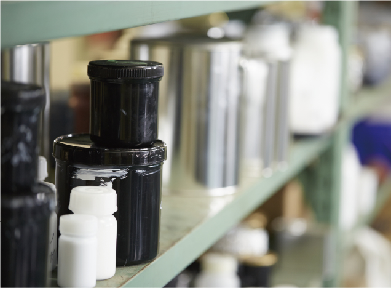Our Technology: #2Core & Base Technologies
Technology: the Origin of Manufacture

Since the development of heat resistant paints, Okitsumo has realized unlimited possibilities in paints via our advanced technical capabilities. Our functional paints, such as heat resistant paint, heat releasing paint, and lubricant paint, have established greater reliability as the highest level of paints in the world. We introduce the Okitsumo's various technical capabilities and base technologies.
Core Technology
(Surface Modification)
Solar Energy Control Technology
A technology to form paint films that controls (e.g., absorbs and reflects) solar energy.
→ Click here for productsHeat Insulation Technology
A technology to form a low-thermal conducting paint film in which a filler with high porosity is dispersed into the paint.
→ Click here for productsCatalyst Application Technology
A technology to form paint films with environmental cleanup and antifouling functions for which metallic oxide with catalysis is fixed with an inorganic binder.
→ Click here for productsHeat Releasing and Heat Radiation Technologies
A technology to efficiently release heat via an action of ceramic pigment.
→ Click here for productsCore Technology
(Surface Modification)
Lubrication and Non-adherence Technology
A technology to form paint films in which fluorine resin and various binders are combined that is excellent in lubricity, abrasion resistance, and releasing property.
→ Click here for productsHeat Resistant Technology
Heat Resistant Technology
A technology to form films with anticorrosive function and adhesion ensured up to high-temperature range via organic-inorganic composite technology and dispersion technology such as combination of silicon resin and inorganic filler.
→ Click here for productsOkitsumo's four base technologies supporting core technology
1. Adhesion Technology
A paint exhibits its property by being painted to a metal or a wood material, and how the paint film adheres to a solid base is an important factor. Approaches for improving the adhesion of paint films generally include the blast processing, etching with chemicals, and chemical film processing such as chromate processing.
Addressing an issue in improving the adhesive power to non-adhesive materials such as stainless steel, we have developed a paint in which adhesion is obtained without such a special processing on the base material. We will further evolve this technology to continuously conduct research on adding new functions to the base material.
2. Dispersion Technology
Functional paints including a heat resistant paint can present their functions by uniform dispersion of various materials into the paint. The dispersion is a technology to recognize the characteristics of functional materials and make the materials into ones in the uniform size by applying shear or vibration in a solution while preventing cohesion of materials. For example, in photocatalyst paint, the important point is to disperse them uniformly in the paint so that nanosized titanic oxide having a catalyst function can efficiently react with ultraviolet rays. In addition, Okitsumo's own dispersion technology, such as mixing ceramic pigments having a large specific gravity with fibrous nanomaterials having a small specific gravity, expands the capabilities of functional paints.
3. Organic-Inorganic Composite Technology
Okitsumo's core technology is supported by the Organic-Inorganic Composite Technology combining each feature of general organic materials and inorganic materials that are stable to heat or natural environment. For example, a heat resistant paint mainly consists of silicon resin and inorganic filler. While silicon resin gradually deteriorates by heating at 300°C or more, the heat resistant paint combined with various types of inorganic fillers does not peel even when it is painted to a steel board and is heated at a high temperature of 800°C. This suppresses the thermal oxidation (deterioration) of the material.
In addition, we have commercialized the paint that has lubricity, non- adherence , and abrasion resistance by combining the functional resin such as PEEK resin and fluorine resin, and inorganic filler. We will aim to further improve the functionality and address the product development utilizing nanosized inorganic filler that is making rapid progress.
4. Heat-Resistant Material Application Technology
Heat resistant paint consists of several types of raw materials, each of which has heat resistant property. We have facilitated the commercialization by rapidly introducing into the development new raw materials, such as fluorine resin, PEEK resin, and PES resin.
As a brand leader, we will continue to develop products via application of new material in technical cooperation with chemical material manufacturers.







